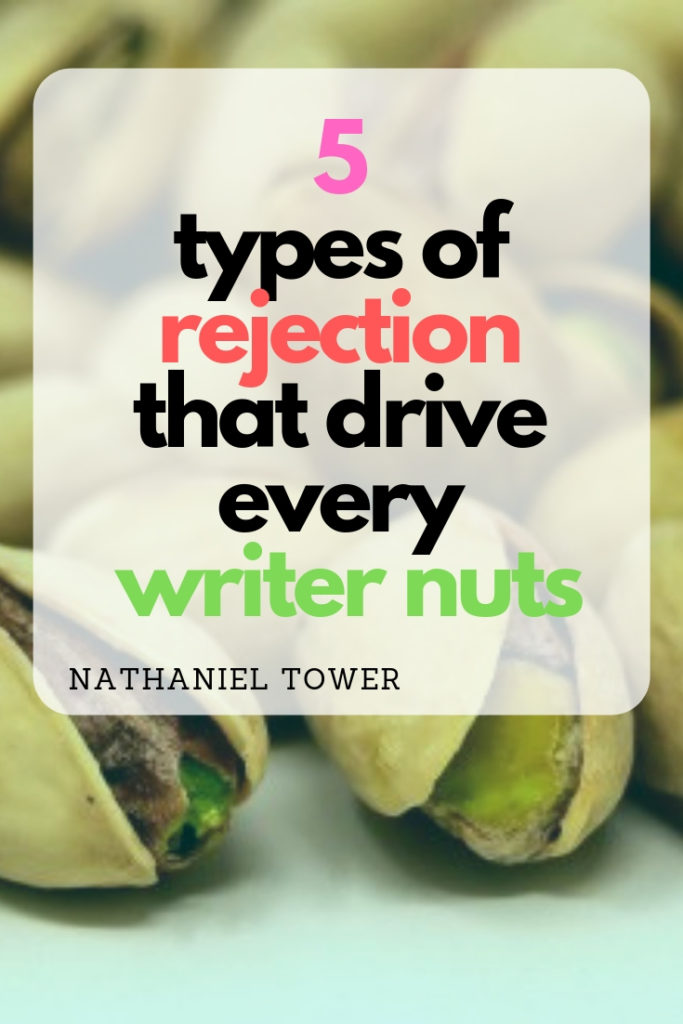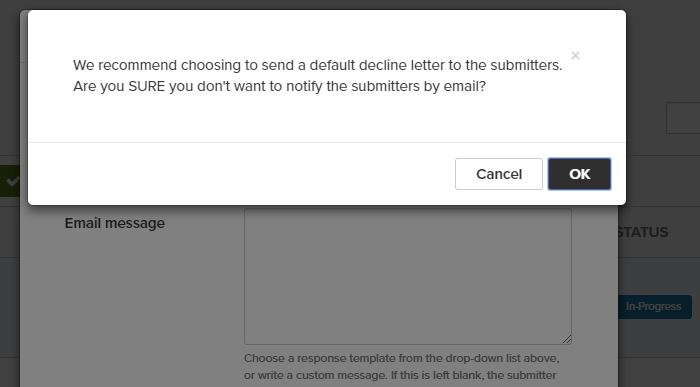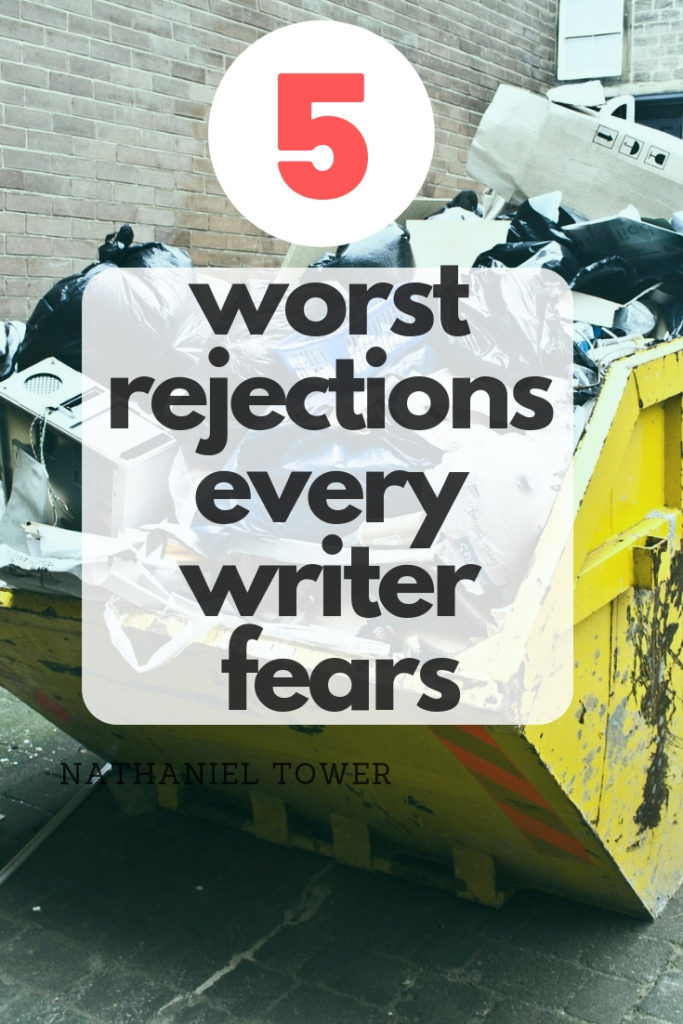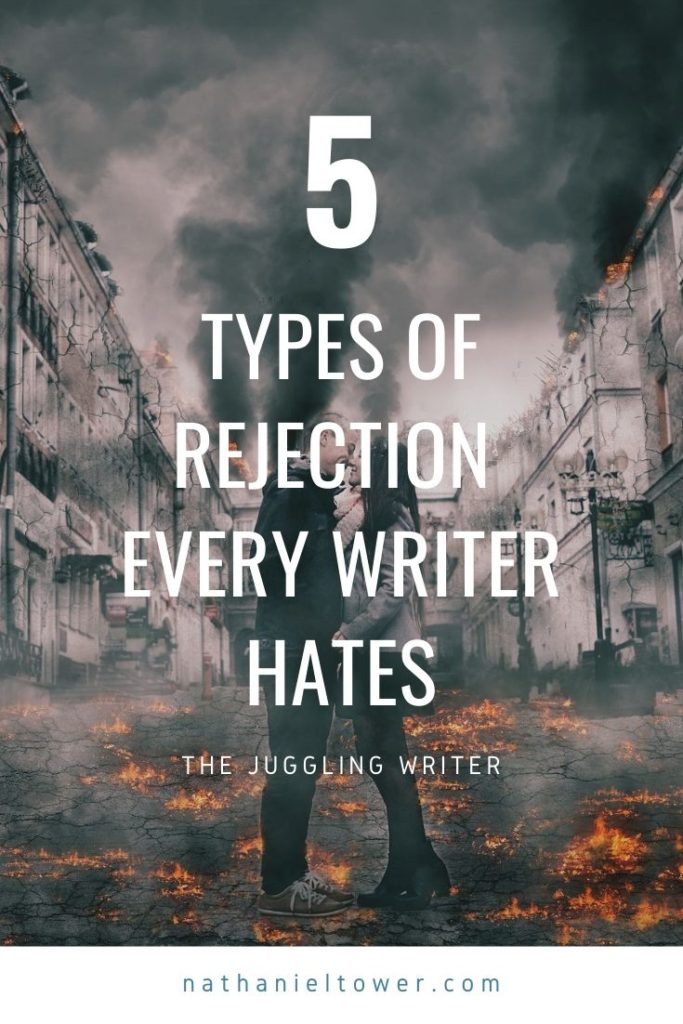Last Updated on March 15, 2020 by Nathaniel Tower
We all know that getting rejected is part of being a writer. But that doesn’t mean we’re immune to getting upset by a rejection.
Having a story or poem rejected can elicit a wide range of emotions including disappointment, frustration, self-doubt, self-pity, anger, and more. Of course, we can also learn from rejections, and they can inspire us to become better writers—or at least help us make some minor revisions that will lead to a better story.
Most rejections shouldn’t set us off. However, if you receive one of these five types of rejections then you have every right to be pissed.

#1 The ex post facto rejection
This is by far the worst rejection you can get. It’s also known as the unacceptance or a reverse rejection. This happens when the publication accepts your piece and then follows up later saying they’ve changed their mind for one reason or another. This rescinded acceptance is especially bad when it’s a paid publication or when you’ve already announced the acceptance to your loyal fans. No matter what the situation, there’s rarely any good that comes from an ex post facto rejection.
Reverse rejections often are accompanied by a vague reason, such as “we’ve decided this piece no longer fits our editorial vision.” They most frequently happen when there’s been a recent change in staff and the new editorial team has a differing opinion on your piece. But there’s many other reasons they can happen as well. And sometimes, it’s incredibly personal.
#2 The implied rejection
These are pretty damn frustrating. You know the type. The publication simply never responds. You wait weeks, months, maybe even years, but you never hear a peep from them. You follow up politely regarding the status of your submission. Still nothing. You check their social media profiles to see if they’ve gone dark. Nope, they’re still posting, still publishing new work. Maybe your submission slipped through the cracks. If it was an emailed submission, maybe it got trapped in a spam filter. There’s a lot of possibilities, but the bottom line is they never take the time to reply.
So how long after you submit should you assume it’s been rejected? Depends on the publication, but my general rule is twelve months. If it takes you a year to get back to me, then I’m 100% positive you don’t want my work. If it’s a Submittable submission, I’ll usually withdraw it if it’s been more than a year, even if it’s marked as in-progress. I try not to be too snarky with my reason for withdrawal. Usually just something like: “Since it’s been more than a year, I’m pretty sure you don’t want this piece. I’m withdrawing it to keep my active submissions up to date.” It’s not like they’re going to read that either.
#3 The secret rejection
The secret rejection is a little different than the implied rejection. With the implied rejection, you never find out the truth. With the secret rejection, they reject you without telling you but there’s still tangible evidence you’ve been rejected. This is a Submittable-only rejection. It occurs when the publication chooses to reject your piece without sending you a notification email. You’ll only know you’ve been rejected when you log into Submittable and see the updated status.
In order for this to happen, the editors have to go out of their way to make sure you don’t receive any type of correspondence that confirms your piece was rejected. By default, Submittable wants the publication to send a notification to the writer. If an editor chooses the option to decline without sending a response, they even get a warning with a strong recommendation to include a notification of some type:

With Submittable, it’s easier to send a rejection letter than it is to send nothing. This is a matter of common courtesy. Writers shouldn’t have to log into their Submittable account to see if they’ve been rejected or not. I can’t see any logical reason why a publication would choose not to notify the writer of a rejection.
#4 The long overdue rejection
Many publications keep writers waiting way too long. How long does it really take to decide whether or not you want to publish a story? I read well over 10,000 submissions during my eight years at Bartleby Snopes. There were very few times when I was on the fence after reading a submission. In fact, I usually made up my mind whether or not I was going to reject a story before I finished reading it. Of course, that doesn’t mean I was ready to reject it when I got to the end. There were often other editors assigned to the same story. Since it’s a pretty subjective thing, we liked to have multiple opinions on every piece. So we didn’t reject stories after one read, but it didn’t take long to get a few readers on each story. Even with thousands of submissions each year, we were still able to do it within two weeks (usually less).
Just how long it should take will depend on the number of submissions the publication gets, the number of readers they have, their general process, and a few other factors. But it should never take more than a few months. There’s no excuse for making writers wait over six months for a rejection. It can’t possibly take you that long to decide a piece isn’t good enough to be published in your venue. 99% of the time, you’ll know right away. Just reject it rather than keeping us waiting.
#5 The condescending form rejection
Form rejections aren’t universally bad (unless you get a form rejection on a paid submission). But there are certainly some pretty ugly form rejections out there. They usually go something like this:
“We get billions of submissions per second and can’t possibly publish everything. Your story was one of the many millions that we can’t publish because we’re so super important. Consider us again and good luck, but not really.”
Translation: We don’t bother reading most of the submissions we get. Yours is one of the ones we didn’t read. We don’t care if you send something else to us. We won’t read that either. It will be a waste of your time, but it will help pad our stats so we can have a .01% acceptance rate on Duotrope. And that will make us look like an amazing publication.
Seriously, form rejections are fine. You shouldn’t be insulted by them. They’re just frustrating as hell when you waited nine months to get a response and they couldn’t even bother to be honest.
The Final Word on Infuriating Rejections
There are a many reasons your story can be rejected and many ways the publication can choose to do it. There’s really no reason to get too worked up about a rejection no matter what it says or how it’s delivered. Remember that a single rejection doesn’t mean you aren’t a good writer, but a long pattern of similar rejections might indicate there’s a problem with your submissions process.
At the end of the day, it’s all a game, and you have to figure out how to play it. Good writing doesn’t always get published. You have to submit the right piece to the right place. That’s the only way to avoid rejection. And even then, you might still lose a few more times than you’d like. If you take every rejection personally, you’re not going to last too long in this whole writing business.
What types of rejection piss you off the most? Share your most infuriating rejections in the comments.



I once got an acceptance by a magazine of a story I was proud of. (Proud of them all, really.) Soon after, the magazine disappeared from the internet and I learned (via Duotrope’s Digest) that it had ceased publication. Not really a rejection, but in the end the same thing.
I’ve had the same thing happened to me. It’s definitely a lousy situation, but at least the publication closed before they published it. Imagine if they had published it and then closed a few days later!
Submitting your work is not for the faint-hearted, for sure! Thanks for this.
This has to be one of the oddest form rejection letters I’ve every received…
“Thank you so much for letting us review THE [TITLE], but we’re going to decline at this time. Unfortunately, your premise just isn’t pulling us in the way we had hoped and we believe you’ve started the story in the wrong place.
Really? The steampunk heroine is attending the funeral of her murdered industrial designer husband, surrounded by villains while the three airships her husband designed are hovering in the sky overhead. Where else, pray tell, should I begin my story? Haha!
Thank you for the article!!
Thank you for sharing your rejection letter. It’s always interesting when editors provide their opinion. Good luck placing the story. Sounds like a fun read!
Waited two years to get a response after a “revise and resubmit.” The snarky, brief email merely said, “unpublishable.” I really rather hope that’s what their journal ends up being.
That’s quite unprofessional. I can’t wait until you get the piece published to prove them wrong!